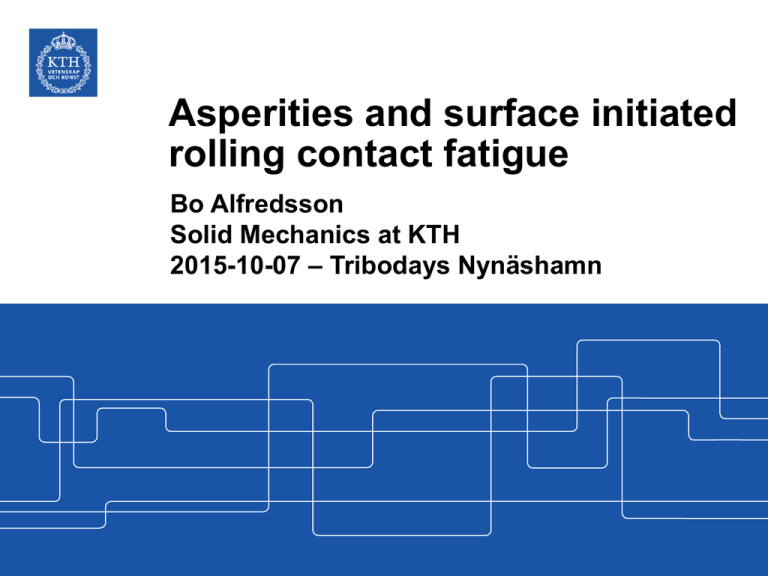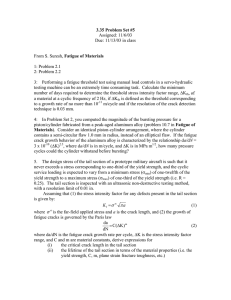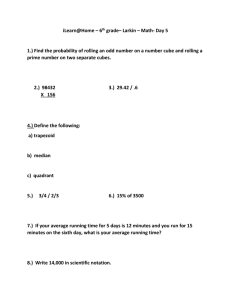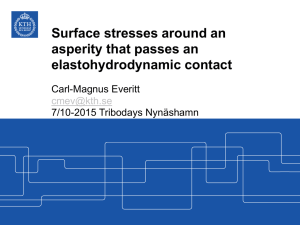Asperities and surface initiated rolling contact fatigue
advertisement

Asperities and surface initiated rolling contact fatigue Bo Alfredsson Solid Mechanics at KTH 2015-10-07 – Tribodays Nynäshamn Rolling contact fatigue Rolling contact fatigue has been considered the default failure mode of Hertzian rolling contact elements: If all other failure modes could be avoided, then rolling contact fatigue would eventually limit the component life. Rolling Contact Fatigue – gears and bearings Two types of Rolling Contact Fatigue w v ≈ w · r Rolling contact 3 mm Tallian 1992 Sub-surface initiation Surface initiation Surface initiated spalling b b = 20 – 24º 0.2 mm 0.1 mm General conditions for fatigue initiation and fatigue crack growth Initiation Sufficiently large shear stress amplitude Tensile maximum stress Fatigue crack growth Sufficiently large DKI ( > Kth, which is R dependent) Open crack tip: KI,max – DKI > KI,cl Crack with mode II or mode III fatigue load will arrest or kink to mode I Crack will follow direction of maximum DKI Whole contact: 2D line contact Line load – 2D P r r r 2 P cos r Always pressure! Stress free surface (J 2.15) The spall is local, asperity is local – local point contact Sphere r r z r ,max 1 2 po 3 Tensile radial stress! Line Asperity mechanism for surface initiated spalling Stress free Cmpressive stresses Asperity point contact Tensile surface stress Together Inside – compression Entry – compression and tension Gear surface roughness profile • • • • Asperity size from roughness measurements Radius of curvature at roll circle – R = 13.6 mm Nominal contact pressures: 2.10 – 2.27 Gpa Model asperities Yes, asperities exist! How can they be responsible for spalling? d h /mm 200 100 50 2 1 2 Stress in front of rolling contact entering asperity d = 200 mm h = 2 mm d = 100 mm h = 2 mm d = 100 mm h = 1 mm d = 50 mm h = 2 mm Influence of asperity size: lasp = hasp/rasp Influence of contact friction: m Influence of residual surface stress: R / MPa Asperity mechanism for surface RCF: Questions to be answered Can a point contact give fatigue? Do the conditions exist in applications? Asperities? Stress levels? Is the crack behaviour predicted? Crack profile of spalls Spalling life Is the parameter influence predicted? Residual surface stress Surface roughness Lubrication film thickness and EHD influence o o Well, more to follow On-going research Mechanism explains why and how • Design guidelines Asperities and surface initiated rolling contact fatigue Bo Alfredsson




